SUMMARY
This is AI generated summarization, which may have errors. For context, always refer to the full article.
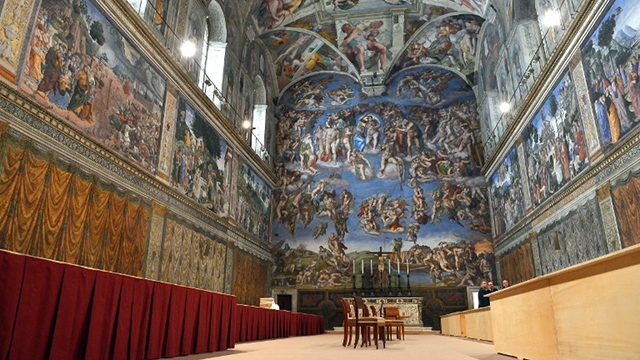
MANILA, Philippines – Starting Tuesday, March 12, cardinals perform a 700-year-old tradition that is bound by secrecy, is divinely inspired according to Catholics, and has produced an uninterrupted line of religious leaders since the time of Jesus Christ.
Coming from the Latin words cum and clavis (“with a key”), a conclave entails locking up cardinal electors in a designated place – thus the need for a key – until they elect a new Roman Catholic leader. The conclave, as it is known today, got its general form in 1274 after centuries of electing popes through various modes.
The conclave on Tuesday will elect the 265th successor of St Peter, believed to be the leader of Jesus’ first apostles.
In text and photos, Rappler shows the conclave’s elaborate rituals that involve a solemn procession, a secret ballot, the threat of excommunication, and of course, the iconic white smoke.
‘Come, Creator Spirit’
From their lodging at the Domus Sanctae Marthae on Tuesday, the 115 cardinal electors – including Manila Archbishop Luis Antonio Tagle – move to the Pauline Chapel in the Vatican’s Apostolic Palace at 3:45 pm (10:45 pm in the Philippines).
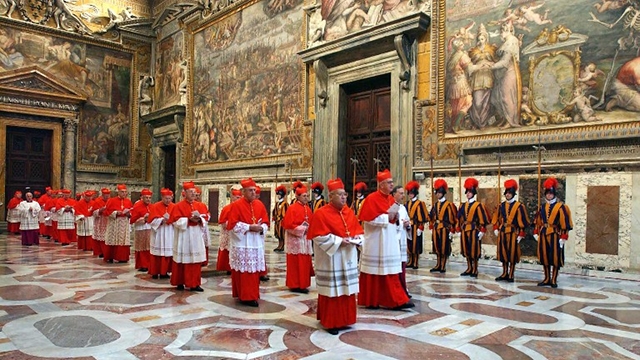 –
–
Then, at 4:30 pm (11:30 pm), the cardinals make a procession to the Sistine Chapel, the conclave’s official venue based on the late John Paul II’s Universi Dominici Gregis, a set of conclave rules.
While marching, the cardinals chant Veni, Creator Spiritus (Come, Creator Spirit), invoking divine intervention in choosing the next pope.
Vow of secrecy, or else…
Cardinal electors then take a vow of secrecy, which, if broken, could mean excommunication from the Catholic Church. The dean of the College of Cardinals, Cardinal Angelo Sodano, reads the following oath aloud:
“We, the cardinal electors present in this election of the Supreme Pontiff, promise, pledge, and swear, as individuals and as a group, to observe faithfully and scrupulously the prescriptions contained in the Apostolic Constitution of the Supreme Pontiff John Paul II, Universi Dominici Gregis, published Feb 22, 1996. We likewise promise, pledge, and swear that whichever of us by divine disposition is elected Roman Pontiff will commit himself faithfully to carrying out the munus Petrinum of Pastor of the Universal Church and will not fail to affirm and defend strenuously the spiritual and temporal rights and the liberty of the Holy See. In a particular way, we promise and swear to observe with the greatest fidelity and with all persons, clerical or lay, secrecy regarding everything that in any way relates to the election of the Roman Pontiff and regarding what occurs in the place of the election, directly or indirectly related to the results of the voting; we promise and swear not to break this secret in any way, either during or after the election of the new Pontiff, unless explicit authorization is granted by the same Pontiff; and never to lend support or favor to any interference, opposition, or any other form of intervention, whereby secular authorities of whatever order and degree or any group of people or individuals might wish to intervene in the election of the Roman Pontiff.”

Following this general oath, each cardinal elector puts his hand on the Holy Gospels, and continues with the following oath:
“And I, N. Cardinal N., do so promise, pledge, and swear… So help me God and these Holy Gospels which I touch with my hand.”
‘Extra omnes’ (‘Everyone out’)
Once the last cardinal elector has taken his oath, the master of papal liturgical celebrations exclaims: “Extra omnes!” which means, “Everyone out!”
From then on, the Sistine Chapel is locked.
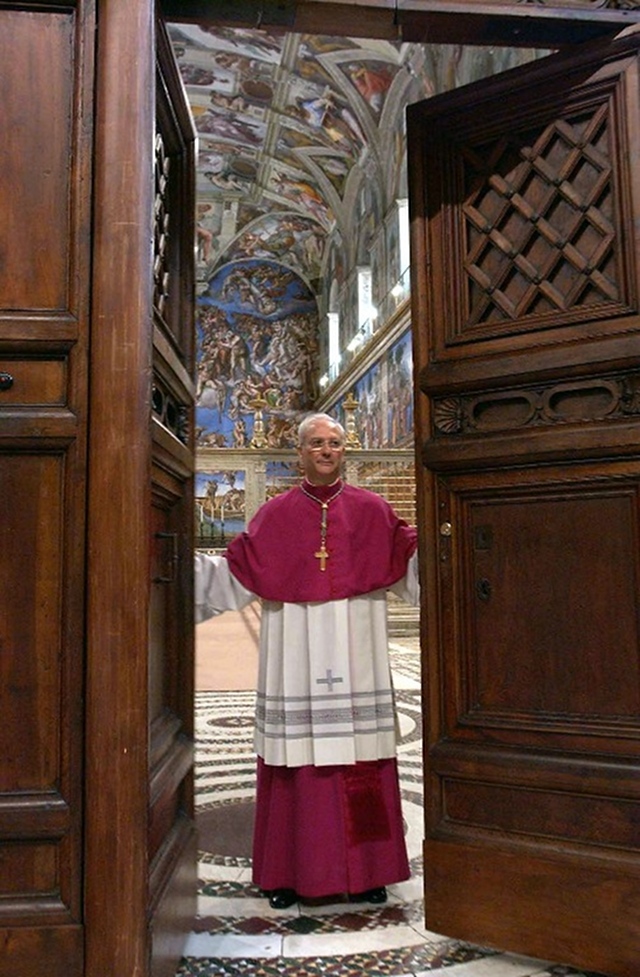
Only the master of papal liturgical celebrations and another prelate, chosen to preach to the cardinal electors, may remain.
Meditation on ‘grave duty’
Cardinal electors listen to a meditation “concerning the grave duty incumbent on them and thus on the need to act with the right intention for the good of the Universal Church,” according to Universi Dominici Gregis.
For the start of the conclave on Tuesday, this meditation comes from Maltese Cardinal Prosper Grech, consultor to the Congregation for the Doctrine of the Faith.
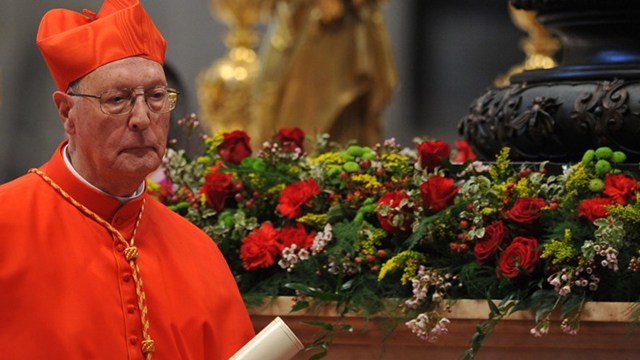
Grech, after he gives his meditation, leaves the Sistine Chapel along with the master of papal liturgical celebrations.
Cardinal electors then recite some prayers, and clarify certain norms and procedures. Once they settle relevant questions, they proceed to the crucial vote.
Secret ballots
Three phases comprise the voting process.
In the first phase, called pre-scrutiny, cardinal electors get up to 3 ballot papers, with the words, “Eligo in Summum Pontificem” (“I elect as Supreme Pontiff…”).
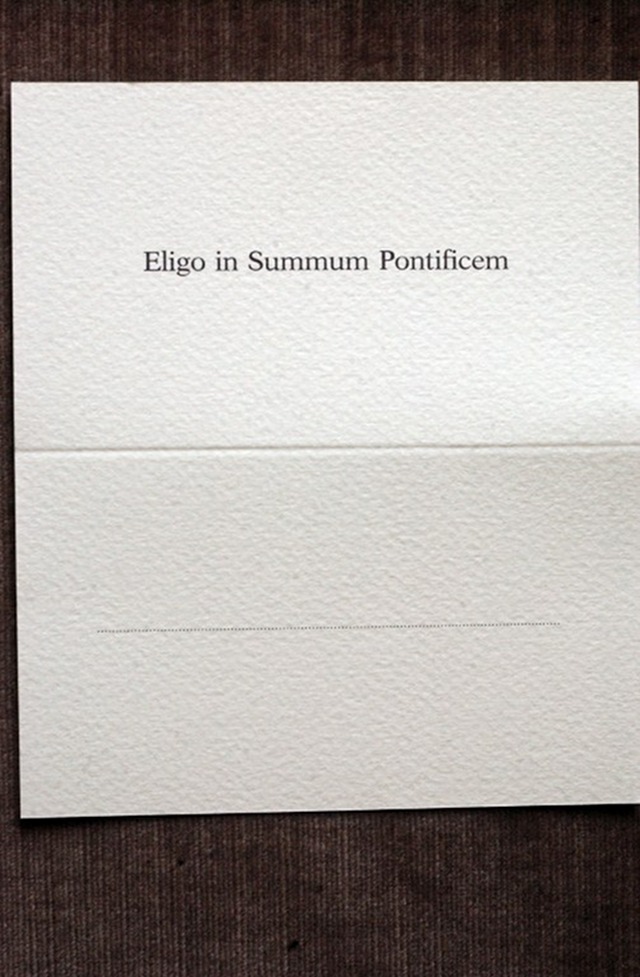
The cardinal electors also pick the following by drawing lots: 3 scrutineers, 3 infirmarii or those who assist the sick in voting, and 3 revisers.
Each cardinal elector fills out a ballot in secret.
Based on John Paul’s decree, the cardinal elector “will write down legibly, as far as possible in handwriting that cannot be identified as his, the name of the person he chooses, taking care not to write other names as well, since this would make the ballot null.”
He will fold the ballot twice.
Papal ‘ballot box’
Each cardinal elector, after having folded his ballot, “holds it up so that it can be seen, and carries it at the altar.”
Upon reaching the altar, each cardinal elector pronounces the following oath: “I call as my witness Christ the Lord who will be my judge, that my vote is given to the one who before God I think should be elected.”
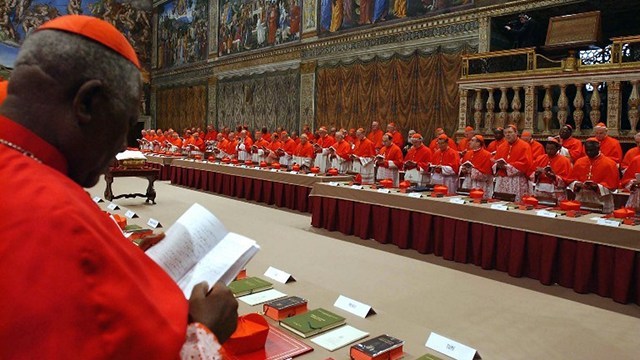
The cardinal elector places the ballot on a plate, using which he drops the paper into the receptacle. He then bows before the altar and returns to his seat.
Ballot-counting
Once all cardinal electors place their ballots in the urn, the first scrutineer shakes the receptacle several times, and the last scrutineer counts the ballots in full view of the cardinals.
The latter places these ballots in another receptacle.

Then, the 3 scrutineers sit at a table in front of the altar, and follow the process below:
-
The first scrutineer takes a ballot, unfolds it, and notes the name of the person chosen
-
The second scrutineer gets the ballot from the first, and notes the name of the person chosen
-
The third scrutineer gets the ballot from the second, and “reads it out in a loud and clear voice, so that all the electors present can record the vote on a sheet of paper prepared for that purpose.” He also writes down the name on the ballot.
In the phase called post-scrutiny, the scrutineers add up all the votes that each individual received. He records these on a separate sheet of paper.
The last scrutineer, as he reads out the ballots, “pierces each one with a needle through the word Eligo and places it on a thread, so that the ballots can be more securely preserved.” The string of ballots is tied in a knot, and is placed in a receptacle or on the side of the table.
Once the scrutineers finish their job, the 3 revisers check the ballots and the notes by the scrutineers, “to make sure that these latter have performed their task exactly and faithfully.”
Burning the ballots
Immediately after revisors check the ballots, the scrutineers should burn all the ballots, as well as all the notes made by cardinal electors. The scrutineers should burn these in front of the cardinals.
Two stoves will serve this purpose.
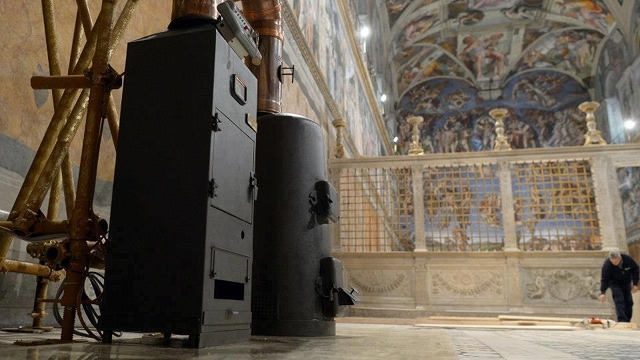
Cast in 1938, the first stove – the older one – will be used to burn the ballots. Upon it is etched the dates of the 5 conclaves it has been used in – from the conclave that elected Pius XII in 1939 until the one in 2005, which elected Benedict XVI.
The other stove is modern. Equipped with an electronic device, the stove will add chemicals to the fumes to produce black or white smoke – the only thing the public can see during the conclave proper.
Black smoke means the cardinals failed to elect a pope, and will have to repeat the process until a candidate gets the mandatory two-thirds of votes.

White smoke means a new leader for 1.2 billion Catholics, the product of the old, elaborate process called the conclave.
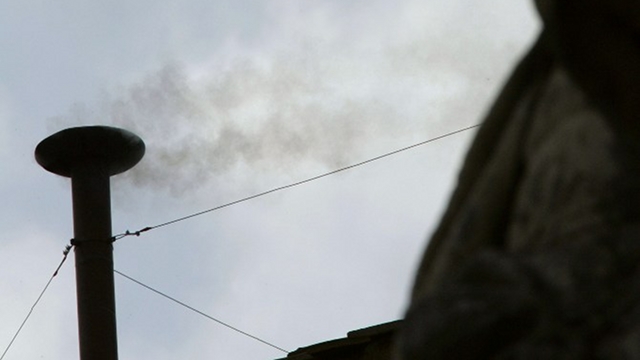
– Rappler.com
Add a comment
How does this make you feel?
There are no comments yet. Add your comment to start the conversation.